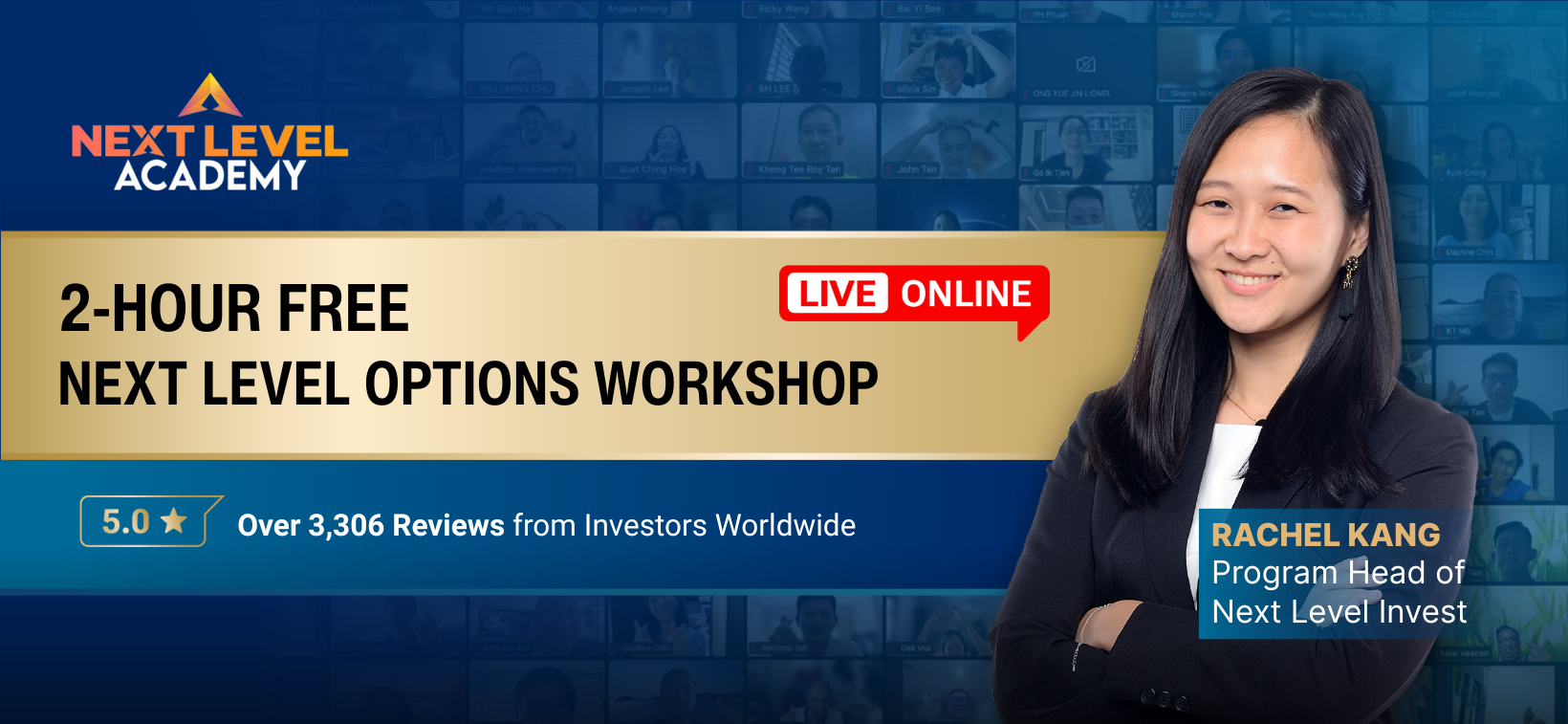- Live Life Grow Wealth
- Posts
- Series 3 Recap Building a Strong Investment Portfolio
Series 3 Recap Building a Strong Investment Portfolio

Today’s Headline
🌍 Mini-Investing Course: Building a Strong Investment Portfolio
Goal: To help you understand how to diversify, balance risk, and build a portfolio that grows with your life.
“Discover the Email Tactics Behind 7-8 Figure Launches — Before Anyone Else Does”
Become an email marketing GURU.
Join us for the world’s largest FREE & VIRTUAL email marketing conference.
Two full days of email marketing tips & trends, famous keynote speakers (Nicole Kidman!), DJ’s, dance contests & networking opportunities.
Here are the details:
100% Free
25,000+ Marketers
November 6th & 7th
Don’t miss out! Spots are LIMITED!
I want in! (US attendees only!)
Day 1: What Is a Portfolio and Why You Need One
When I first started investing, I thought buying a few stocks was enough. I didn’t realize that a proper investment portfolio was more than just a random mix of investments — it’s a strategy, a plan, and a reflection of your goals.
A portfolio is simply a collection of your investments — stocks, bonds, funds, cash, or even real estate. But its true purpose is balance. It helps you spread your money across different types of assets so you can grow your wealth while protecting it from risk.
Think of it like a football team. Each player has a role — defense, offense, midfield. Together, they form a strong unit. Your portfolio works the same way — different assets play different roles to help you win the financial game.
A well-built portfolio allows you to:
Manage risk without giving up on growth.
Have multiple income sources.
Stay on track even when markets move up and down.
The best part? You don’t need to be rich to start. You just need a plan.
Takeaway: A portfolio is your personal financial engine — build it wisely, and it’ll take you where you want to go.
Day 2: The Power of Diversification (Don’t Put All Eggs in One Basket)
You’ve probably heard the saying “Don’t put all your eggs in one basket.” That’s diversification in one sentence.
Diversification means spreading your money across different investments so that when one performs badly, others can support your overall returns. It’s how investors reduce risk without giving up on growth.
For example:
If you only invest in tech stocks, a tech crash will hurt you badly.
But if you also hold healthcare, energy, and consumer stocks, your losses are cushioned.
Add bonds or REITs, and your portfolio becomes even more balanced.
There are three main ways to diversify:
Across asset classes: mix stocks, bonds, and real estate.
Within asset classes: hold different types of stocks or bonds.
Across regions: invest globally, not just in one country.
Diversification doesn’t guarantee profits — but it protects you from disaster. It’s like having multiple safety nets under your tightrope walk.
Takeaway: Diversification is the quiet hero of long-term investing. It keeps your portfolio steady when the world gets noisy.
Day 3: Asset Allocation — Finding the Right Mix
If diversification is what you invest in, asset allocation is how much you invest in each.
It’s the percentage of your money that goes into different categories — for example, 60% stocks, 30% bonds, 10% cash.
Asset allocation matters more than the individual stocks you pick. It’s what determines your long-term results. Why? Because markets move in cycles — when stocks drop, bonds may rise. Having the right mix helps balance those ups and downs.
Here’s a simple guide based on your stage in life:
Young (20s-30s): More stocks for growth.
Middle age (40s-50s): Add bonds for stability.
Retirement (60+): Focus on income and capital protection.
The right allocation depends on your goals, risk tolerance, and time horizon. There’s no universal “perfect mix,” but there’s a “right mix” for you.
Takeaway: Your asset allocation is your blueprint for success — design it around your goals and personality, not someone else’s.
Day 4: Global Investing — Why You Shouldn’t Just Stick to One Country
Many new investors make this mistake — they invest only in their home country. It feels familiar, safe, and easy to understand. But the truth is, sticking to one country limits your opportunities.
The world is full of great businesses and fast-growing economies. By investing globally, you tap into different industries, technologies, and growth stories that might not exist in your local market.
For example:
U.S. markets have strong innovation leaders like Apple and Tesla.
Asia has fast-growing giants in tech and e-commerce.
Europe has stable dividend-paying companies.
Global investing helps you reduce country-specific risk too. If your local economy slows, your overseas investments can balance the impact.
You don’t need to pick foreign stocks individually. Global ETFs or mutual funds can give you worldwide exposure in one step.
Takeaway: The world is your portfolio. Don’t limit your growth to your country’s borders.
Day 5: How to Rebalance Your Portfolio Like Pros Do
Even the best portfolio can drift out of balance over time.
Imagine you started with 60% stocks and 40% bonds. If stocks perform well, they might grow to 70% of your portfolio. That means you’re now taking more risk than planned.
Rebalancing means adjusting your investments back to your original target. You sell a bit of what’s grown too much and buy more of what’s lagged behind. It sounds simple, but it’s powerful — it forces you to “buy low and sell high.”
Here’s how professionals rebalance:
Set a schedule (every 6 or 12 months).
Set tolerance bands (e.g., if allocation drifts 5-10% off target).
Automate when possible.
Rebalancing isn’t about chasing performance. It’s about discipline — keeping your risk level consistent so your portfolio stays healthy.
Takeaway: Rebalancing is like a health check-up for your investments. Do it regularly, and your portfolio stays strong for years.
"Boost your investment strategy by unlocking the power of CTV advertising with Roku Ads Manager—learn how to maximize returns this holiday season. Click here to explore!"
It’s go-time for holiday campaigns
Roku Ads Manager makes it easy to extend your Q4 campaign to performance CTV.
You can:
Easily launch self-serve CTV ads
Repurpose your social content for TV
Drive purchases directly on-screen with shoppable ads
A/B test to discover your most effective offers
The holidays only come once a year. Get started now with a $500 ad credit when you spend your first $500 today with code: ROKUADS500. Terms apply.
Day 6: Passive vs. Active Investing — Which Works Best Long-Term?
This debate has been going on for decades.
Active investing means trying to beat the market — picking individual stocks, timing trades, and researching trends.
Passive investing means tracking the market — using index funds or ETFs that mirror indexes like the S&P 500.
Active investors believe they can find hidden opportunities. Passive investors believe it’s better to ride the market’s long-term growth with low fees and less stress.
Studies show that most active investors underperform the market over time — mainly due to higher costs and emotional mistakes. Passive investing tends to do better for most people because it’s simple, consistent, and requires less guesswork.
But it’s not either-or. You can combine both:
Use passive investing for your core holdings.
Add active investing for fun or extra growth.
The key is balance. Your portfolio should reflect your knowledge, time, and interest.
Takeaway: Passive investing wins for most people — but if you love research, a small active slice can keep things exciting.
Day 7: How to Build a Portfolio That Fits Your Lifestyle
There’s no perfect portfolio — only the one that fits you.
If you’re busy, prefer stability, or dislike risk, choose a simple, automated setup with index funds and regular contributions.
If you enjoy the process and have time to analyze companies, build a more hands-on portfolio.
Your lifestyle should dictate how you invest — not the other way around.
Here’s how to align your portfolio with your life:
Match it with your goals (retirement, house, financial freedom).
Match it with your time (how often you can monitor).
Match it with your comfort level (how much volatility you can tolerate).
Keep reviewing your portfolio as your life changes — career, family, or priorities. What works now might not work in 10 years, and that’s okay. The best investors adapt.
Takeaway: The perfect portfolio isn’t built overnight. It’s built through reflection, balance, and time.
Final Takeaways
A strong investment portfolio isn’t about chasing trends or getting rich fast. It’s about building something that lasts.
Across these 7 days, you’ve learned:
What a portfolio is and why it matters.
How diversification protects your wealth.
Why asset allocation determines long-term success.
The value of investing globally.
How rebalancing keeps your plan in check.
The difference between passive and active investing.
How to personalize your strategy to your lifestyle.
When you combine all these lessons, you gain control — not over the market, but over your financial direction.
Remember, the goal isn’t to be perfect. It’s to stay consistent. Every dollar invested wisely today becomes your silent worker for tomorrow.
🚀 Call to Action: Take Charge of Your Financial Future
Now that you’ve completed this mini-investing course, take the next step.
Review your current investments.
Create a simple portfolio plan.
Start small, stay consistent, and adjust as you learn.
Building a strong portfolio is not about timing the market — it’s about time in the market. The earlier you start, the stronger your financial future becomes.
Your journey to financial freedom doesn’t end here — it starts here.
[Live Life Grow Wealth]
🎓 Free Masterclasses to Unlock Your Investment Potential
Take your money skills to the next level with expert-led workshops designed to help you grow smarter and faster.
Recommendations Section
|
|
|
DISCLAIMER
I make no representations, warranties, or guarantees, whether expressed or implied, that the content provided is accurate, complete, or up-to-date. Past performance is not indicative nor a guarantee of future returns.
I am an individual content creator and not regulated or licensed by the Monetary Authority of Singapore (MAS) as I do not provide investment services.
All forms of investments carry risks, including the risk of losing your entire invested amount. Such activities may not be suitable for everyone. You are strongly encouraged to seek advice from a professional financial advisor if you have any doubts or concerns.









